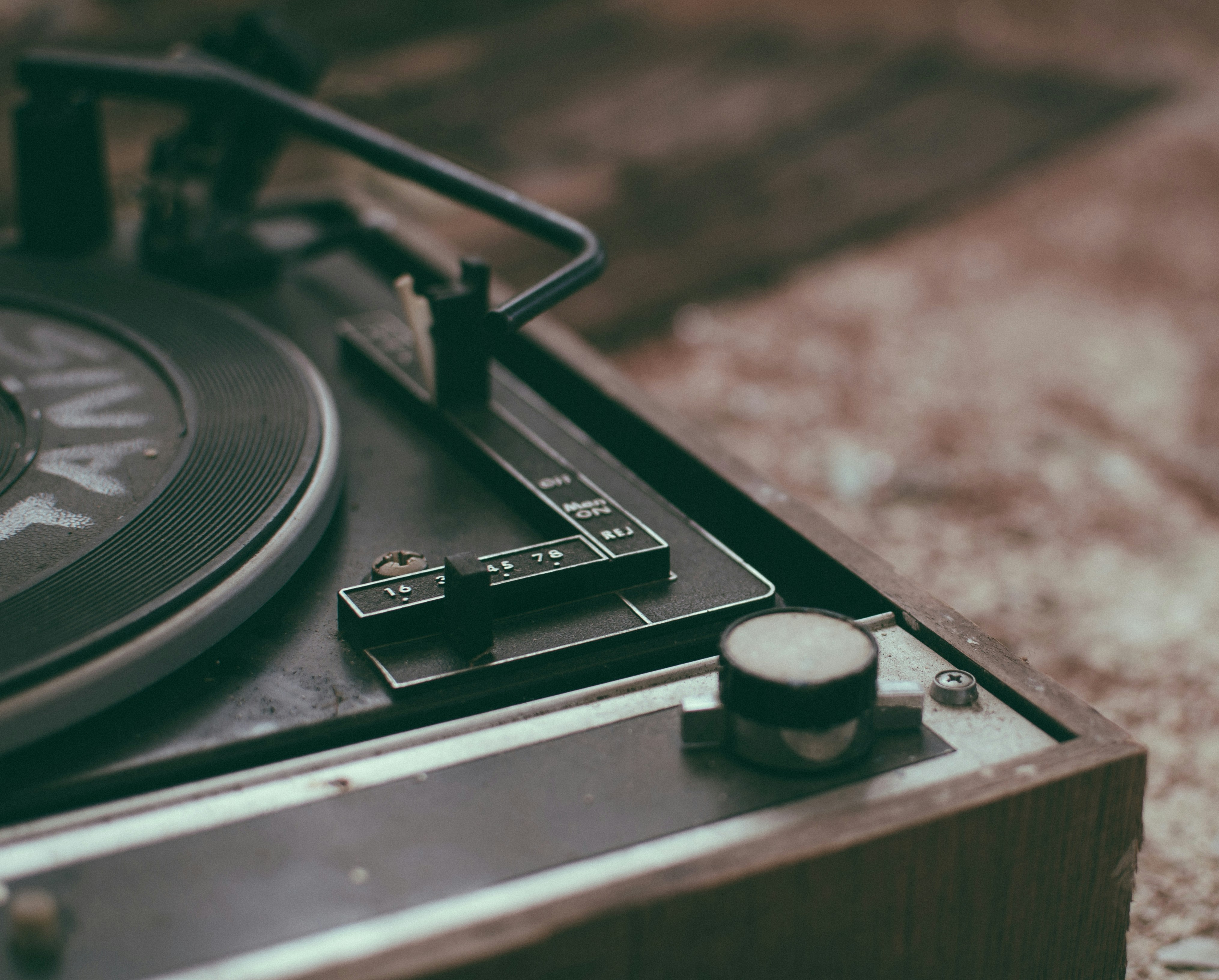
Antique Phonographs & Turntables: History, Collecting Tips, and Cultural Impact

Antique Phonographs & Turntables: History, Collecting Tips, and Cultural Impact
The Origins of Phonographs and Turntables: A Brief History
Delving into the captivating history of phonographs and turntables reveals a journey that revolutionized how we interact with sound. These devices laid the foundation for modern sound recording, tracing their origins back to groundbreaking inventions and the visionary pioneers of sound technology. The history of sound recording devices is a tale of technological advances and a narrative of how sound became an integral part of human culture and communication.
The phonograph’s inception can be traced to ingenious designs that initially captured sound on grooves etched onto tin foil or wax cylinders. This method of recording was revolutionary, providing the first means of capturing and replaying sound. The impact of being able to record sound was profound, offering a new dimension to the preservation and dissemination of audio, ranging from music to spoken word.
The initial recordings, such as the iconic “Mary Had a Little Lamb,” hold a special place in the annals of sound history. This simple phrase, recorded as the earliest known captured sound, marked the beginning of an era showcasing the potential of sound recording. These early experiments set the stage for the evolution of phonographs and turntables into complex devices capable of delivering high-fidelity audio, forever changing how we experience music and recorded sound.
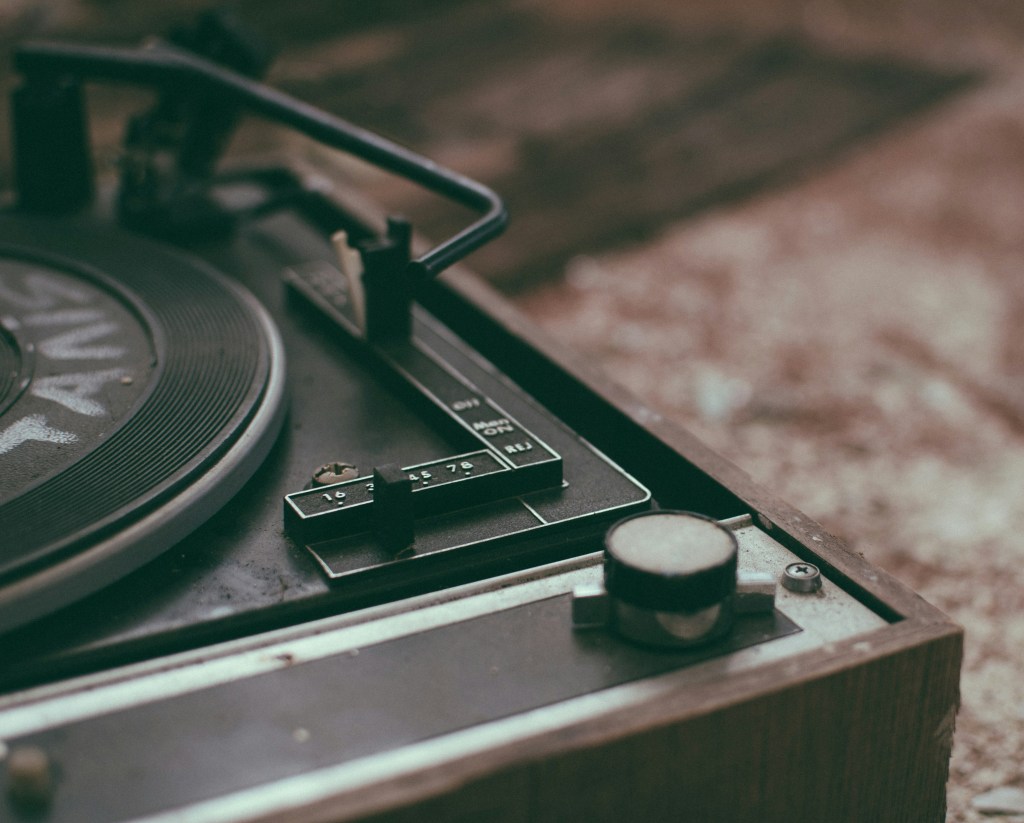
Evolution of Sound: Key Milestones in Phonograph and Turntable Development
Discovering the significant advancements and innovations that shaped the development of phonographs and turntables over the decades reveals a fascinating journey through history.
The evolution from phonographs to modern turntables charts a course of technological innovation and changing sound recording and reproduction trends.
Phonograph development
The history of phonographs begins in 1877, marking the earliest iteration of the turntable and laying the groundwork for future developments. Invented by American inventor Thomas Edison, the Edison phonograph utilized a stylus that recorded sound onto a tinfoil-wrapped cylinder, with music playback achieved by dropping a needle onto this cylinder. This groundbreaking technology paved the way for all future sound recording devices.
Emile Berliner invented the gramophone in 1887, introducing the flat disc using zinc to record sound waves, a significant departure from the phonograph’s tinfoil cylinders. In the early 20th century, vulcanite, a rubber-based compound, and shellac soon replaced the zinc records. This showcased an evolution in materials for recording sound and recorded music.
The year 1907 marked the introduction of 78 RPM records, primarily recordings of opera singers, indicating a broadening in the variety of recorded content. Two decades later, in 1927, a significant technological leap occurred. Wind-up record players were phased out in favor of electric-powered ones, distinguishing record players from turntables in their operation and functionality.
Turntable milestones
The Great Depression in 1937 severely impacted the music industry, yet jukeboxes emerged as a saving grace, keeping the demand for music alive during challenging times. The technological advances spurred by World War II had a notable impact on records, with the introduction of 33 RPM and the advent of the vinyl record in 1947. Vinyl was particularly significant for its improved sound quality, representing a major milestone in audio recording history.
By 1957, the trend among audiophiles shifted from all-in-one systems to component systems. Enthusiasts began investing in building their own sound systems, incorporating belt-driven turntables as a key component. This period marked the start of kit building, emphasizing the customization and personalization of audio playback equipment. It underlined the enduring passion for sound quality and innovation in the journey of phonographs and turntables.
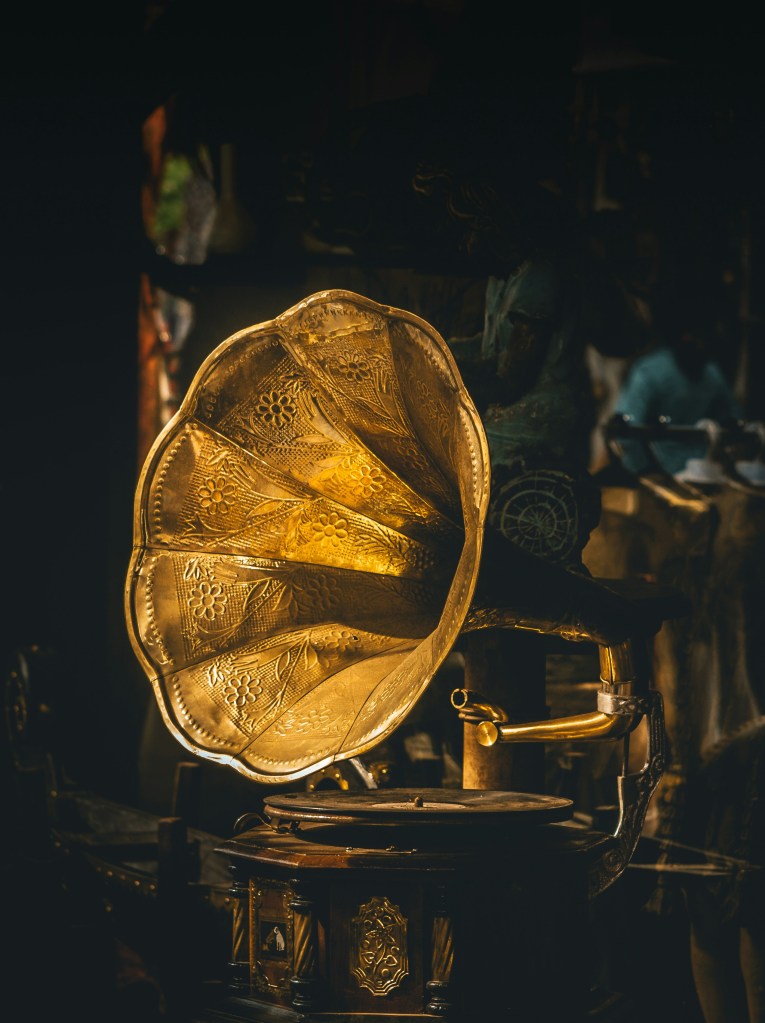
Identifying Antique Phonographs and Turntables: Features and Models
Collectors and enthusiasts must recognize and distinguish different antique phonograph and turntable models. Key features and identifying marks play a crucial role in this process.
Antique phonographs and vintage turntable features vary across different models, so knowing what to look for is important.
Early phonograph
Machines produced between 1880 and 1930 are considered antique phonographs. This era was a prime time for the production and innovation of phonographs, with many unique models developed during these years. However, it’s important to note that while many vintage players might bear the name “Victrola,” this term refers to a brand rather than a specific type of phonograph.
While Victrola is a well-known manufacturer, the presence of its name doesn’t automatically confer an item’s status as a true vintage or antique. Many brands and manufacturers were active during this period, and researching which ones were producing items at the time can provide valuable insights.
Vintage record players
When lucky enough to discover a true vintage Victrola, it’s paramount to remember that these models were designed to play 78 rpm records and should ideally use shellac recordings. The heavier needles used in these antique machines can cause significant damage to the grooves of vinyl records, which were not designed to withstand such wear.
Proper usage and maintenance of these historic pieces ensure their preservation for future generations to appreciate their beauty and historical value.

Starting Your Collection: Tips for Finding and Acquiring Antique Pieces
Embarking on the journey of collecting antique phonographs and turntables can be exciting and rewarding. This pursuit allows you to own a piece of the history of recorded sound, appreciate vintage record players, and even enjoy early recordings in their intended forms.
The key to building a valuable and meaningful collection lies in understanding where to find these treasures and how to evaluate their authenticity and collection.
Where to start
To begin with, it’s crucial to conduct thorough research. This foundational step helps distinguish genuine vintage pieces from replicas, which can often appear deceptively similar to untrained eyes. Research also aids in refining your collection focus, directing your efforts toward items that truly resonate with your tastes and interests.
Ask yourself what you’re interested in. Are you looking for a machine like an antique phonograph or a gramophone, or are you more interested in vintage and antique records like shellac discs or a rotating cylinder?
Identifying your motive behind collecting can significantly influence the types of phonographs or turntables you pursue. Whether your collection is driven by aesthetics, a desire to play phonograph recordings, or an appreciation for historical significance, your goals will dictate the condition and functionality of the pieces you seek.
Confirm that the phonograph is working for those interested in playing vintage records. If considering restoration, be aware of the challenges and costs involved, or seek professional assistance.
Collecting vintage and antique phonographs
When considering what to collect, prioritize what you genuinely like and are interested in rather than following trends. Some well-known brands, such as an Edison standard phonograph or even Columbia and Victor, are popular among collectors. However, exploring other lesser-known brands can uncover hidden gems.
Setting a budget is an essential aspect of collecting. It ensures that your passion does not financially overburden you and helps you narrow down your choices within your collection.
Finding reputable markets and sellers is vital for a successful collection. For online purchases, diligently read reviews to gauge the seller’s credibility and ensure the deal is genuine. When buying from physical stores or dealers, request a demonstration to verify that the item is in working condition if that is what you’re looking for in your collection.
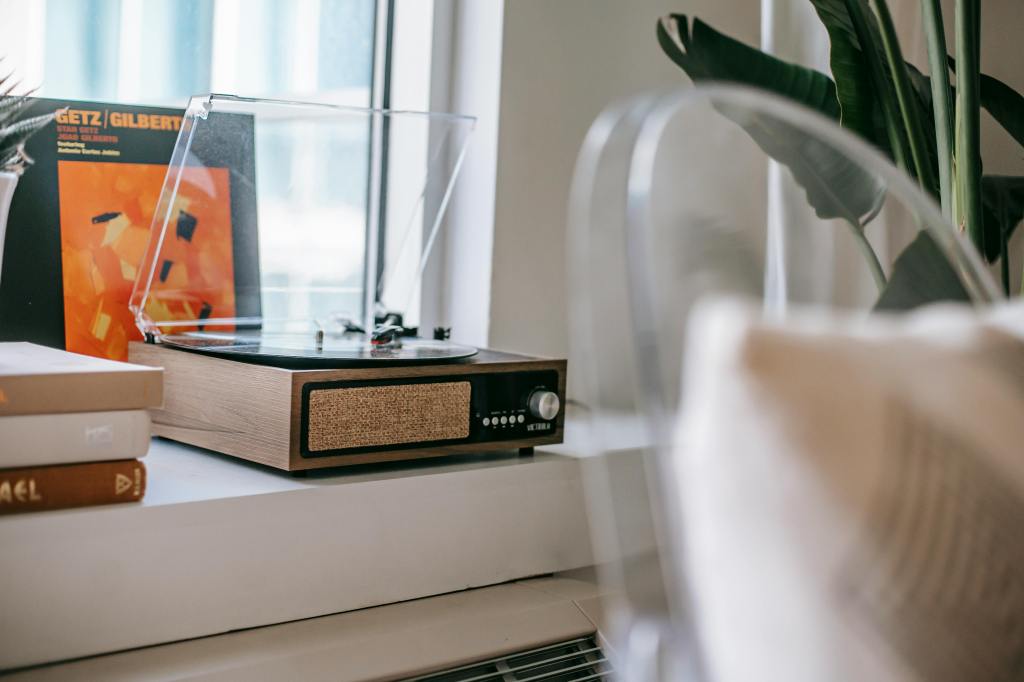
Caring for Your Collection: Preservation and Maintenance Techniques
Maintaining and preserving antique phonographs and turntables is essential for ensuring their longevity and historical value.
Phonograph maintenance
These vintage audio devices not only hold nostalgic appeal but are also prized collectibles that, with proper care, can continue to function and enchant for years to come. The key to their upkeep lies in understanding the nuances of phonograph maintenance and turntable preservation, with a particular focus on caring for antiques.
If you’re fortunate enough to possess a vintage or antique phonograph in good and original condition, the most prudent action is to clean it gently and leave it as is. Minimal intervention preserves the authenticity and value of these antiques.
However, restoration or refurbishment might seem appealing if the phonograph is damaged. It’s essential to recognize that this process can be costly and challenging, as it requires finding a service expert to handle and refurbish vintage phonographs, which is no small feat.

Restoring Antique Phonographs and Turntables: Best Practices and Common Challenges
Exploring the intricate world of antique restoration, this guide delves into the art of restoring cherished collectibles. Focusing on restoring phonographs and offering valuable insights into turntable restoration, it is tailored for passionate enthusiasts and collectors.
Turntable restoration tips
For enthusiasts considering returning a vintage phonograph to its former glory, several key aspects demand attention. Cleanliness, for instance, plays a critical role in enhancing the visual appeal of these historic pieces. Proper cleaning techniques suitable for wood finishes must be employed, using products designed specifically for this purpose and a nonabrasive, soft cloth. A soft toothbrush becomes an invaluable tool for cleaning the more complex parts of the phonograph, ensuring every nook is attended to.
Restoring vs refurbishing
Regarding in-depth care, there are two primary routes to consider: refurbishing or restoring. Each approach serves a distinct purpose and outcome. Refurbishing typically focuses on lightly buffing the original finish to remove minor scratches, preserving the item’s integrity and originality. This option best suits items whose finishes remain in relatively good condition.
Conversely, restoration entails a more radical approach—stripping away the original finish and stain completely and applying a new coat of paint. This method dramatically transforms the item, usually reserved for severely deteriorated pieces, altering its original appearance and arguably its value.
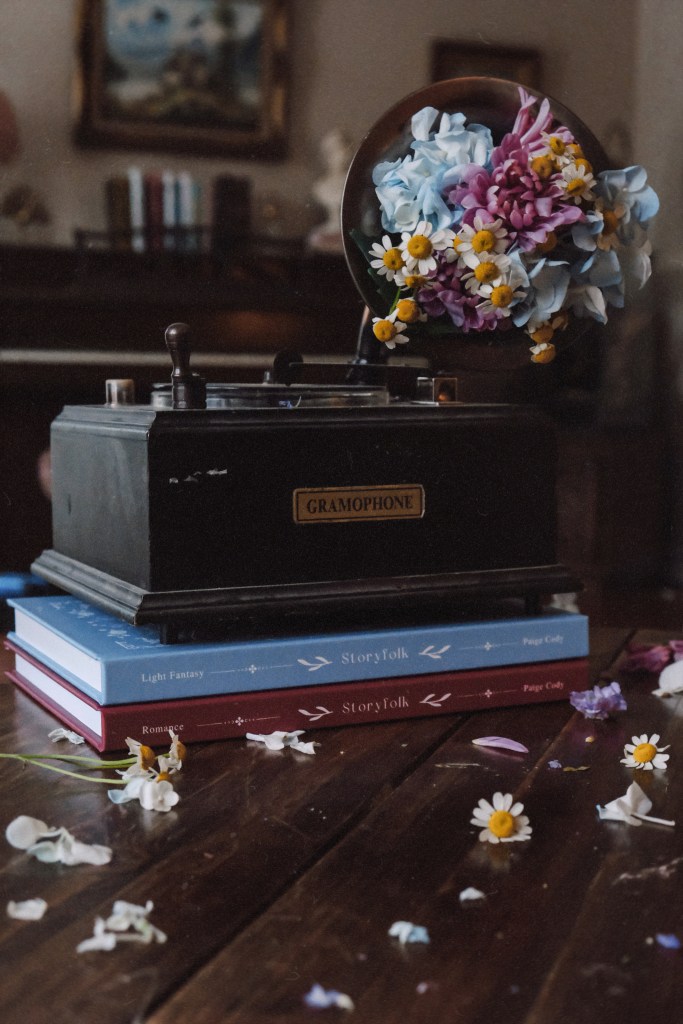
The Cultural Significance of Phonographs and Turntables: Influence on Music and Society
The phonograph and turntable have significantly impacted music culture and society, reshaping how we experience and indulge in sound. This influence can be observed through various facets of music history, where the cultural impact of the invention of the phonograph and the turntable’s influence have played pivotal roles.
Impact and influence
Phonographs and gramophones revolutionized the accessibility of music. Before their invention, music was largely experienced in live settings or not at all. With the advent of these devices, music could be recorded, stored, and replayed, making it accessible to a much wider audience than ever before.
Music history
By the early 20th century, records had evolved into an independent economic industry. This period also highlighted how the music industry could aid nationalism and patriotism, a phenomenon distinctly observed in the U.S. during World War I. Patriotic songs recorded and played on portable phonographs offered soldiers on the front lines a form of reprieve from the horrors of war, connecting them with their homeland and its values.
Furthermore, the phonograph made opera, music once reserved for the upper echelons of society, accessible to all. This democratization of music consumption played a crucial role in breaking down social barriers associated with musical genres.
Another significant contribution of phonographs and turntables was the creation of new genres of music, such as jazz. This laid the groundwork for many contemporary genres we enjoy today, allowing obscure and regional music genres to gain recognition. This period of musical innovation broadened the spectrum of music available to the public, paving the way for a rich diversity of sounds and styles.
However, introducing the radio presented a competitive challenge to phonographs and records, as it offered an even more accessible means for the masses to enjoy music. However, This competition led to improved recorded sound quality as the industry sought to maintain its relevance and appeal to consumers.
Eventually, thanks to these technological advancements in music recording and playback, music became accessible and free to all. This accessibility catapulted popular culture into a new era and profoundly impacted social change, particularly in addressing race and gender inequality.
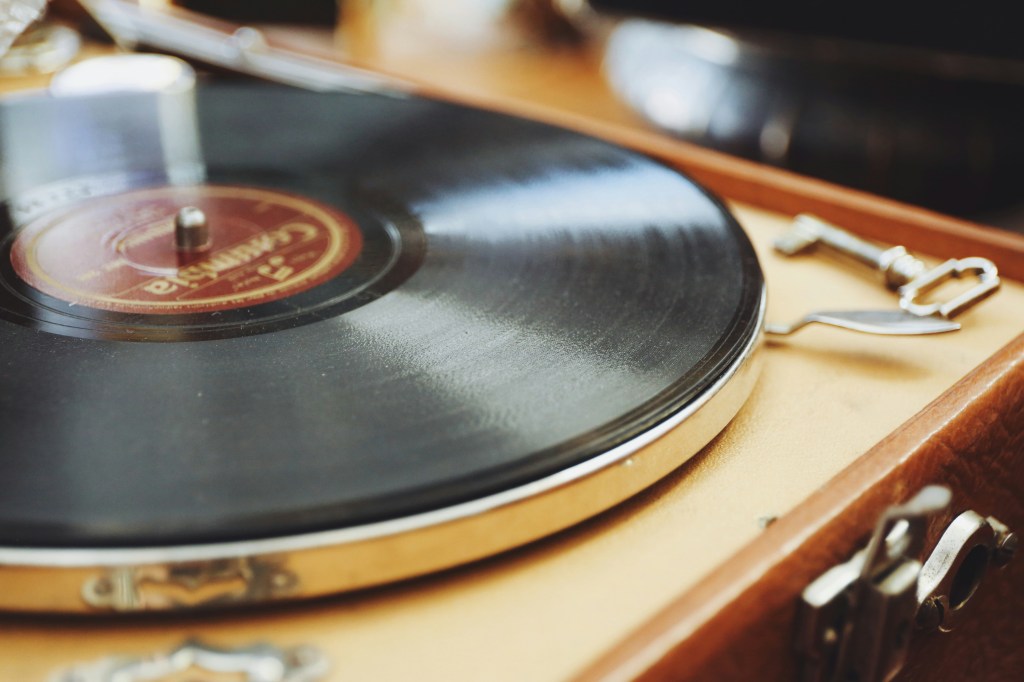
The Future of Antique Phonograph and Turntable Collecting
Exploring the realm of antique phonographs and vintage turntables offers a fascinating glimpse into the evolution of audio media technology and its role in shaping our modern media landscape.
The future prospects of collecting these historical devices reveal enthusiasm and dedication toward preserving the past. This passion not only unfolds a chapter in music and entertainment history but also serves as a bridge to understanding the changes technology has undergone.
Collecting trends
The resurgence in record collecting among audiophiles signals a vibrant renaissance for vintage audio appreciation. This renewed interest stretches beyond the mere act of collecting to embody a form of cultural preservation and a statement against the omnipresent digitalization of our lives.
The tactile experience of handling vinyl records, from rifling through stacks to delicately placing the needle on the grooves, provides a sensory pleasure unmatched by the convenience of digital formats. This physical interaction resonates with a craving for authenticity and a deeper connection to music that many feel is lost in the age of streaming.
Furthermore, the auditory experience offered by these antique devices and vinyl records starkly contrasts with digital sound. Many argue that the sound quality of vinyl, with its unique warmth and depth, captures the nuances of music that digital formats often fail to replicate. This auditory distinction fosters a nostalgic allure, transporting listeners back to a time when music was as much about the experience as it was about the sound.
Lastly, affordability and ownership add another dimension to the trend. In an era dominated by streaming services, the appeal of owning tangible media like records, a CD, or cassettes speaks volumes about consumer values. Unlike the ephemeral nature of digital subscriptions, physical media offers perpetual access to one’s favorite music, immune to the whims of streaming platforms and record label disputes. This sense of permanence and personal ownership is a pivotal reason driving the resurgence of interest in collecting vintage turntables and vinyl records.
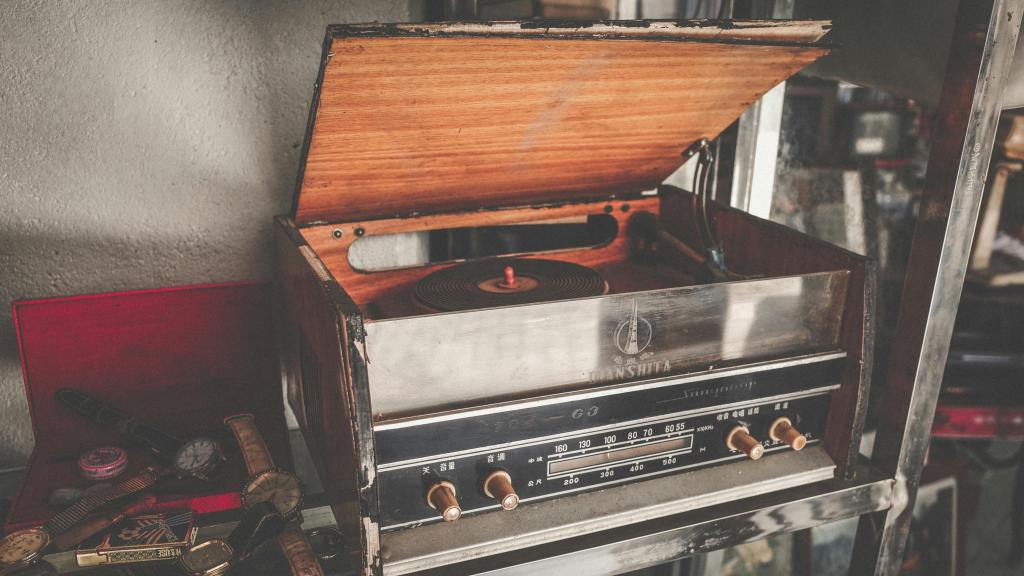
Resources for Enthusiasts: Books, Clubs, and Online Communities
For those with a fervent interest in phonographs, turntables, and vintage audio, many valuable resources exist to explore. These include books that delve deep into these beloved machines’ technical and historical aspects, clubs where collectors and enthusiasts gather to share their passion, and vibrant online communities that offer a platform for discussion and discovery.
Engaging with these resources enriches one’s understanding and connects individuals with a shared passion.
Online forums are excellent platforms for enthusiasts to unite and form a tight-knit community. Here, individuals can share insights, ask questions, and learn from each other’s experiences.
One notable forum is The Antique Phonograph Society, a treasure trove for those looking to source machines, accessories, records, and information about upcoming auctions. This forum serves as a comprehensive guide for novice collectors and seasoned aficionados.
Moreover, exploring local groups and events adds a physical dimension to this hobby. Record swaps, vintage audio sales, and local flea markets are not just places to find rare items; they are venues to meet like-minded individuals, make friends, and exchange tips and tricks.
These events offer a unique opportunity to immerse oneself in the culture, see items firsthand, and learn from direct conversations with fellow collectors and enthusiasts.
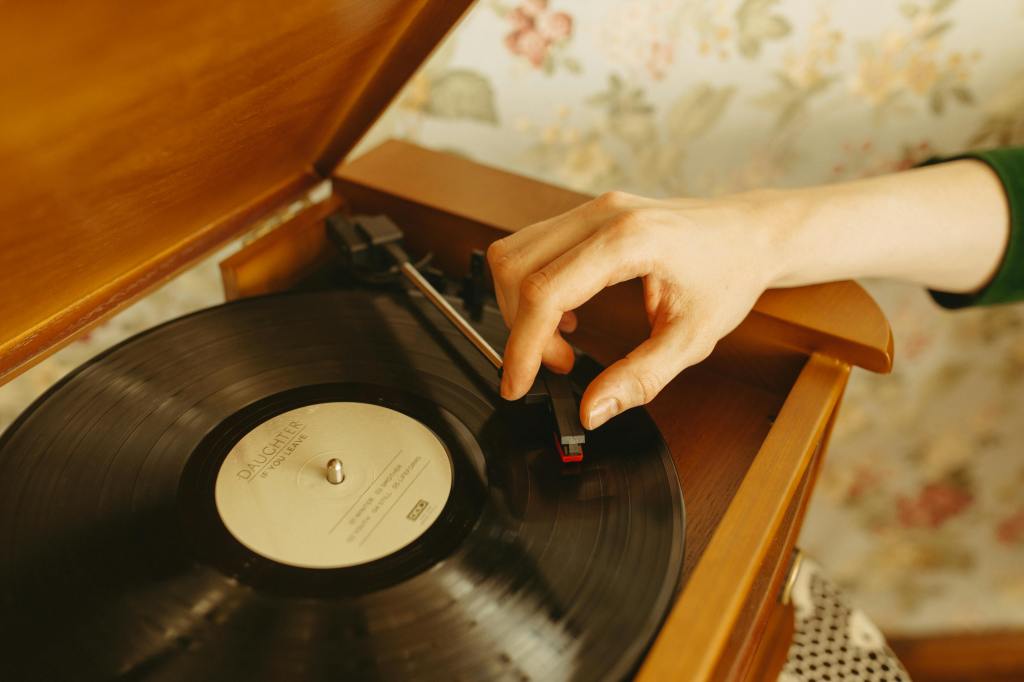
Sources
http://www.victor-victrola.com/Very%20Basics.htm
http://www.noedison.com/M-collecting.shtml
http://www.victor-victrola.com/RESTORATION.htm
https://www.maison-robert.com/phonograph-repair-restoration/
https://medium.com/@driftingcanvas/how-the-phonograph-shaped-our-world-cd0c9c2b3723#:~:text=By%20providing%20pre%2Drecorded%20music,identified%20themselves%20and%20their%20feelings.
https://www.nwestiowa.com/news/collector-donates-six-phonographs-to-dordt/article_7e75b826-afe2-11ee-a833-b7626a5b718b.html
https://blog.fluance.com/best-turntables-vinyl-record-players-popularity/
https://forum.antiquephono.org/
https://www.facebook.com/groups/phonograph/
About Collectibles Insurance Services
Collectibles Insurance Services has been protecting collections since 1966 and all coverage is provided by a carrier with a group rating of “A” (Excellent) by AM Best, the leading rating agency for the insurance industry.
Comprehensive coverage includes, but is not limited to: accidental breakage, burglary, fire, flood, loss in the mail, theft, natural disasters, and other causes of loss unless specifically excluded from the policy. Deductibles start at $0 for collector policies and we provide coverage for the market value of your collection for losses in excess of $50.
Additionally the protection extends At home and away, and we don't require collection itemization and serial number nor extensive paperwork and red tape.
